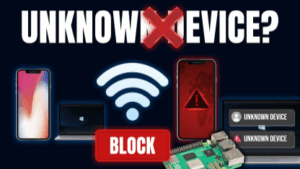Packet Tracer file (PT Version 7.1): https://bit.ly/2IvWY5y
Get the Packet Tracer course for only $10 by clicking here: https://goo.gl/vikgKN
Get my ICND1 and ICND2 courses for $10 here: https://goo.gl/XR1xm9 (you will get ICND2 as a free bonus when you buy the ICND1 course).
For lots more content, visit http://www.davidbombal.com – learn about GNS3, CCNA, Packet Tracer, Python, Ansible and much, much more.
#CCNA #PacketTracer #CCENT
The Routing Information Protocol (RIP) is one of the oldest distance-vector routing protocols which employ the hop count as a routing metric. RIP prevents routing loops by implementing a limit on the number of hops allowed in a path from source to destination. The largest number of hops allowed for RIP is 15, which limits the size of networks that RIP can support.
RIP implements the split horizon, route poisoning and holddown mechanisms to prevent incorrect routing information from being propagated.
In RIPv1 router broadcast updates with their routing table every 30 seconds. In the early deployments, routing tables were small enough that the traffic was not significant. As networks grew in size, however, it became evident there could be a massive traffic burst every 30 seconds, even if the routers had been initialized at random times.
In most networking environments, RIP is not the preferred choice for routing as its time to converge and scalability are poor compared to EIGRP, OSPF, or IS-IS. However, it is easy to configure, because RIP does not require any parameters unlike other protocols.
RIP uses the User Datagram Protocol (UDP) as its transport protocol, and is assigned the reserved port number 520
Based on the Bellman–Ford algorithm and the Ford–Fulkerson algorithm distant-vector routing protocols started to be implemented from 1969 onwards in data networks such as the ARPANET and CYCLADES. The predecessor of RIP was the Gateway Information Protocol (GWINFO) which was developed by Xerox in the mid-1970s to route its experimental network. As part of the Xerox Network Systems (XNS) protocol suite GWINFO transformed into the XNS Routing Information Protocol. This XNS RIP in turn became the basis for early routing protocols, such as Novell’s IPX RIP, AppleTalk’s Routing Table Maintenance Protocol (RTMP), and the IP RIP. The 1982 Berkley Software Distribution of the UNIX operating system implemented RIP in the routed daemon. The 4.2BSD release proved popular and became the basis for subsequent UNIX versions, which implemented RIP in the routed or gated daemon. Ultimately RIP had been extensively deployed before the standard written by Charles Hedrick was passed as RIPv1 in 1988.
Transcription:
So, on switch 1
show ip interface brief
The switch isn’t configured with an IP address.
So what I can do is say interface Vlan1 no shut
Now I could statically allocate an IP address to the switch or use DHCP. I’ll simply use DHCP here. In the real world, you probably want to use static IP address rather than DHCP IP addresses. But you can see the switch has been allocated to this IP address.
show ip route
no gateway of last resort is set. ICMP cache is empty, that means we need to type IP default gateway and specify the default gateway if I can spell that, as being the router.
So now, show ip route
shows us that the switch has a default gateway of the router. So this switch should be able to ping Google.com, which it can. So that’s good.
On switch 2, I’ll configure the IP address statically. So host switch 2, at the moment
show ip interface brief
shows us that no IP address is configured on the switch.
So when we look at the routing table, nothing is displayed.
So interface vlan 1
ip address 10.1 and in this case it’s in subnet 10.1.3. So I’ll give it IP address 2 and then I’ll say IP default gateway 10.1.3.1, which is router 2.
So it should be able to ping the DNS server if everything is set up right, doesn’t look like it’s working. Let’s check our configuration,
So show ip route
default gateway is configured as this.
show ip interface brief
I probably didn’t shut the interface and that’s what’s happened interfaces. Administratively shutdown
so interface VLAN 1 no shut interface is now up.
So can I ping 10.1.3.1 which is router 2? Yes I can.
Can I ping the DNS server? Yes I can. And if we specify the name server being that DNS server, we should be able to ping CISCO.com.
In the real world, you may not want your switches to be able to ping that way, but here we simply want to prove that IP connectivity works.
So can we ping switch 1? Yes we can.
So as an example, if I try telnet to that IP address, we’re getting connection has been closed. We need to configure that switch for telnet…..














